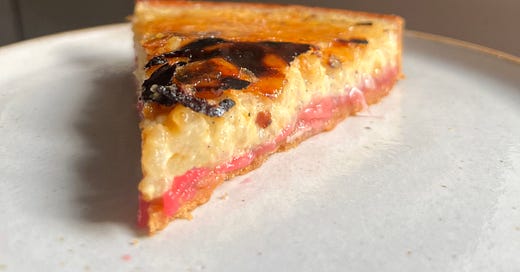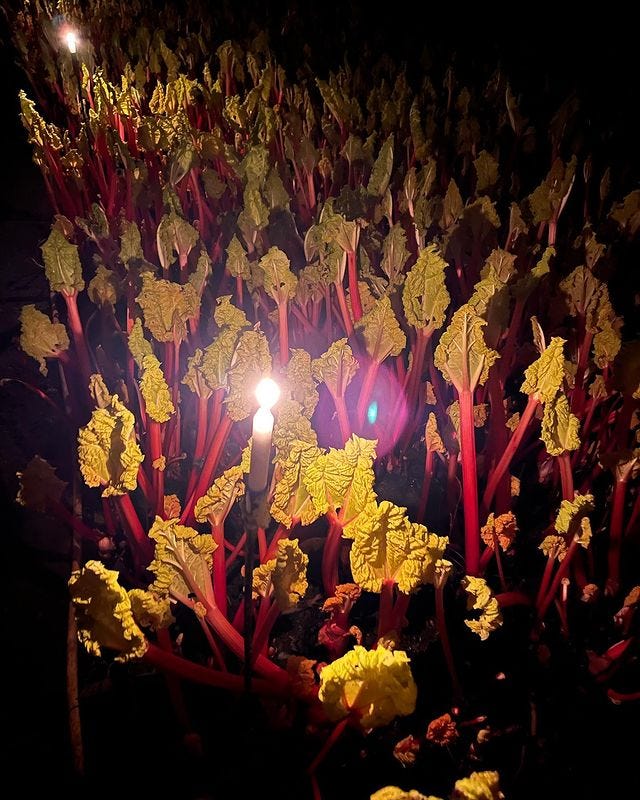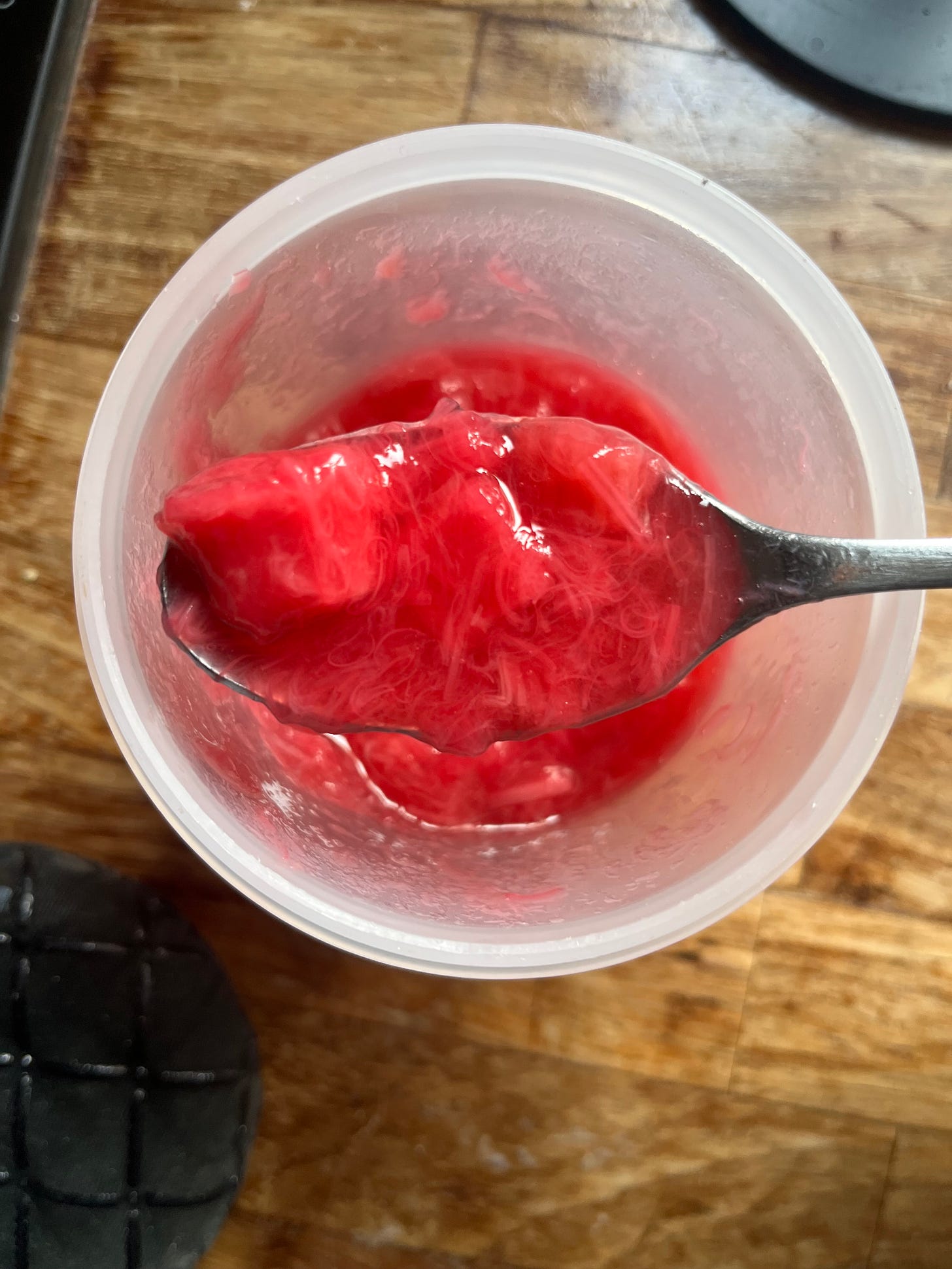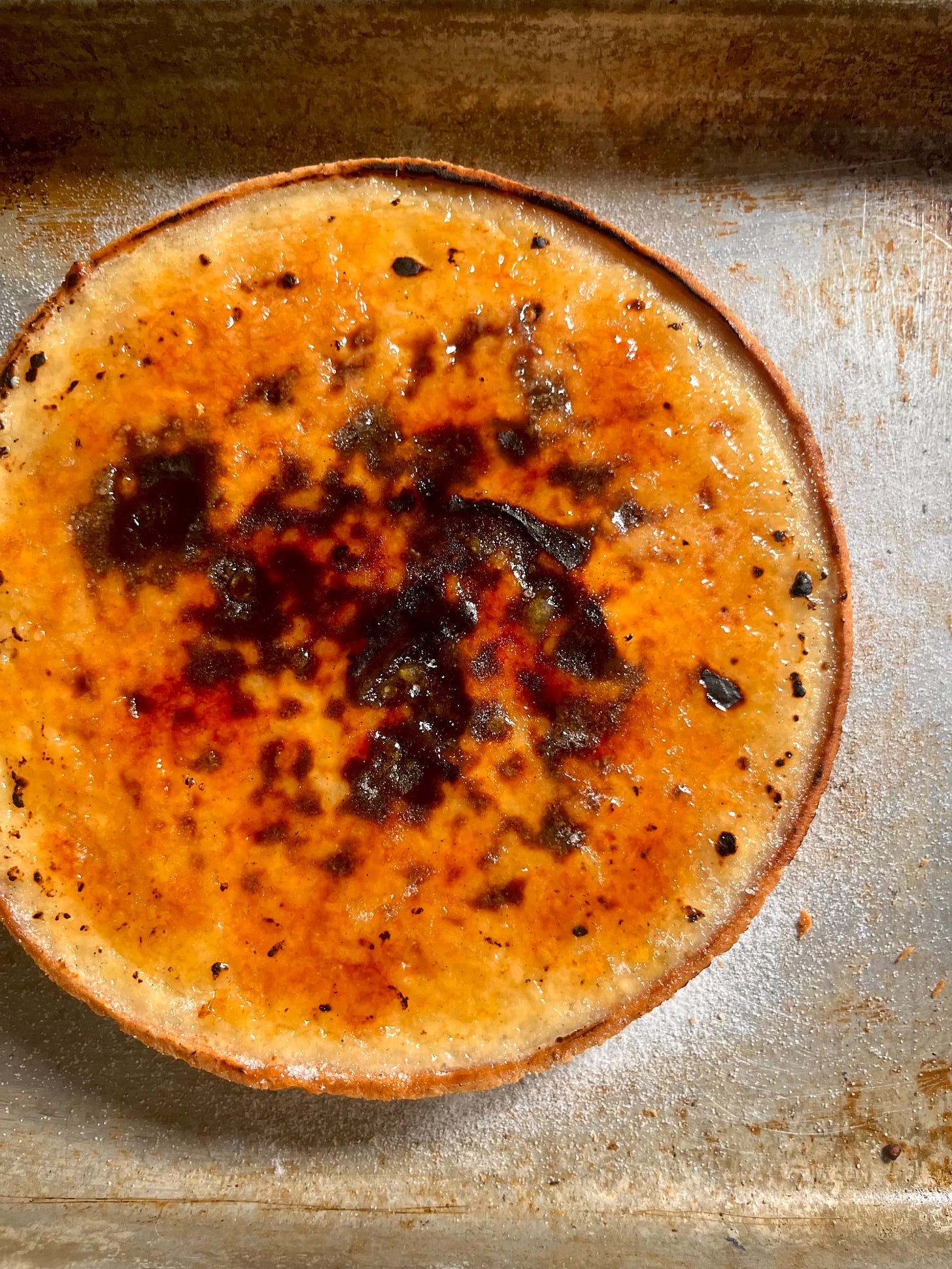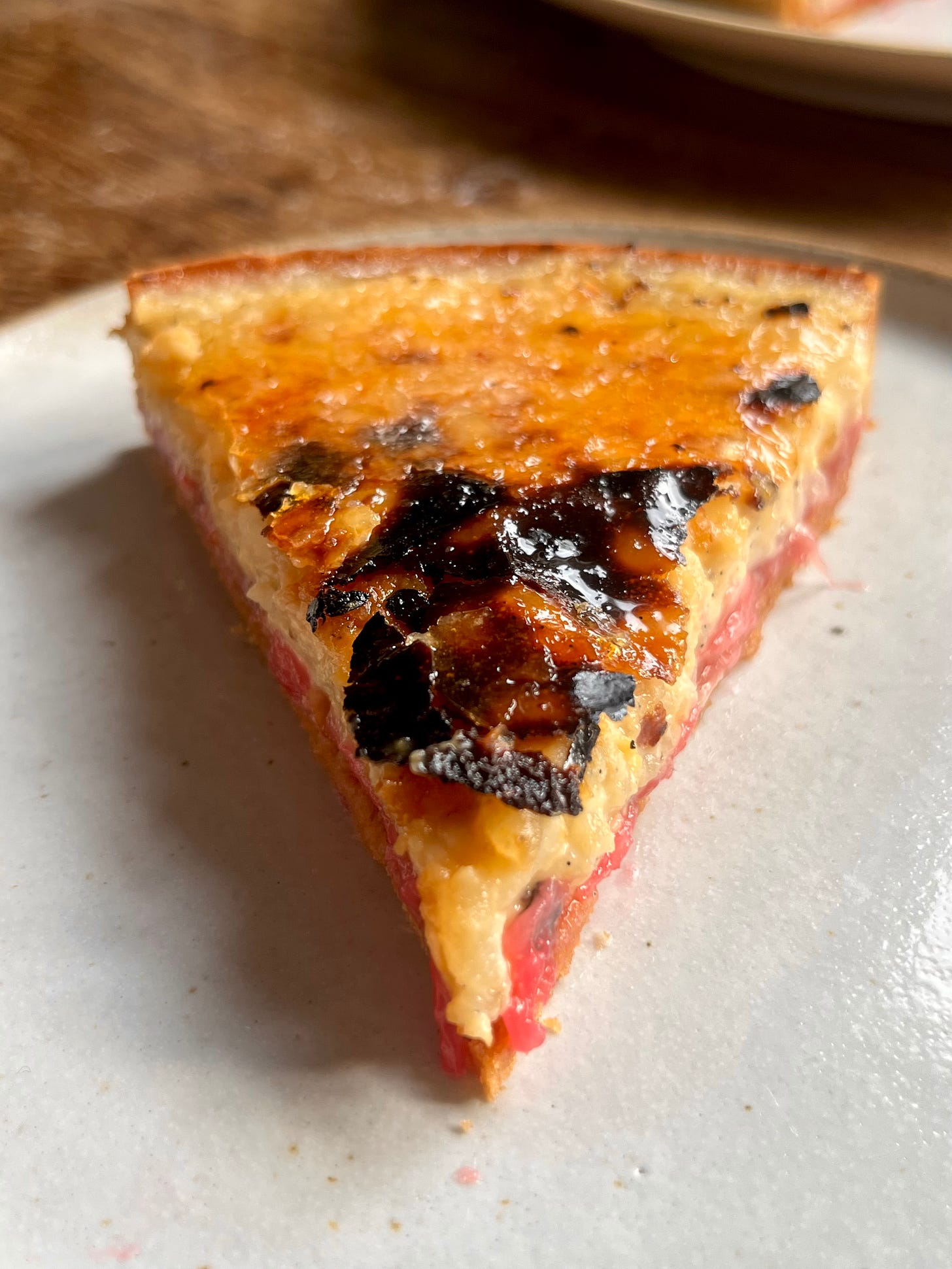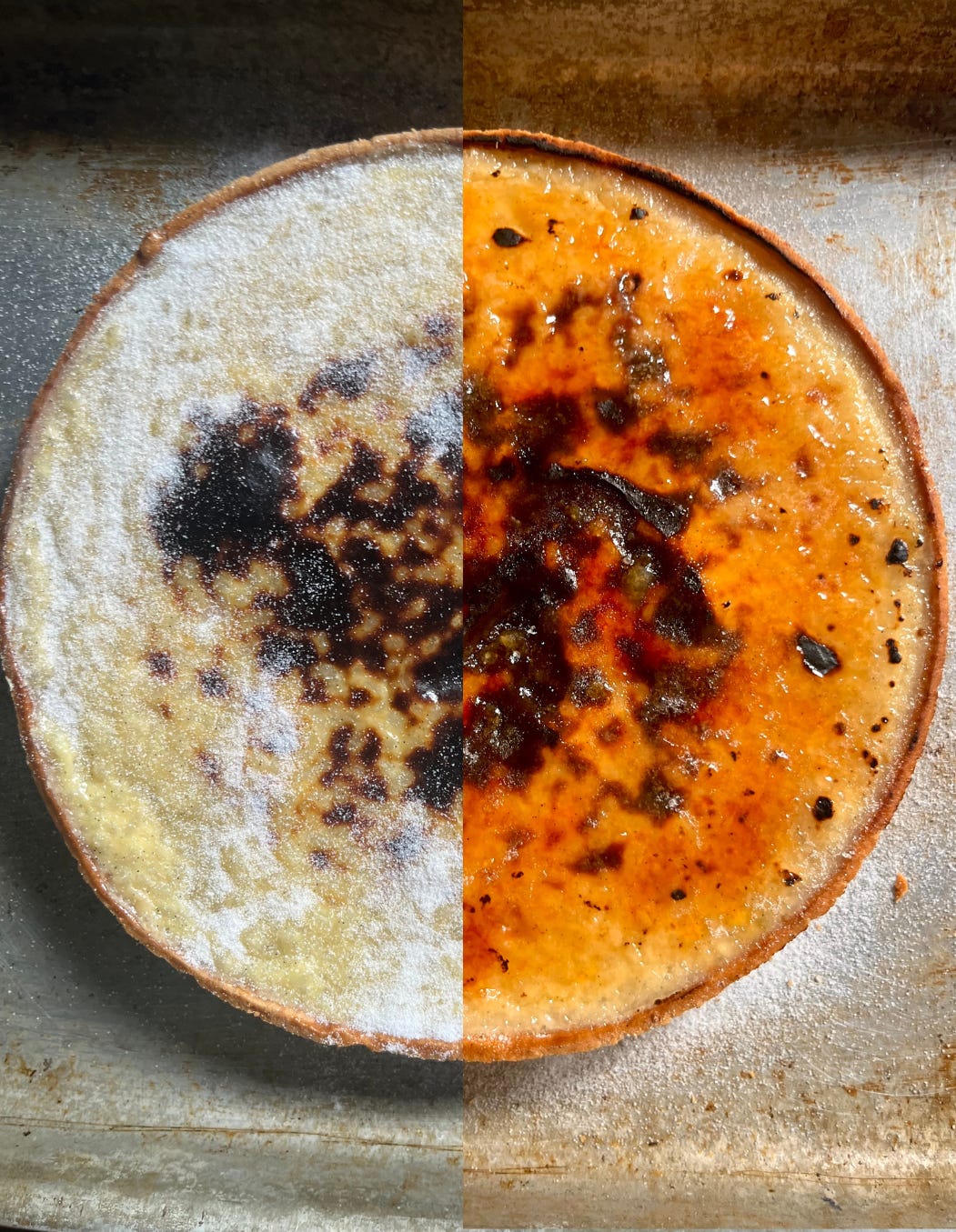It’s time for you to fall back in love with rhubarb. I’ve been tracking the progress of the Yorkshire Rhubarb through the @rhubarbrobert Instagram account and it’s officially BACK! You see, Robert is one of the most well-known forced rhubarb producers in the UK - his red and yellow boxes marked ‘Tomlinsons’ always caused a stir of excitement in the kitchen.
If you’ve never seen how forced rhubarb is produced, then please take a moment to strap yourself in because it is a bizarre and, I think, hilariously witchy process. Forced Rhubarb is grown by candlelight.
In an image that is somewhere between an 80s horror film and a scene from Wallace and Gromit, hundreds of perfectly pink rhubarb sticks with frilly, acid-green leaves appear to be congregating in the dark. It always looks to me like a plot is underfoot and we should consider our days numbered because this pink and green army could (and will probably) march on us anytime:
Think it looks weird? Well, you should hear how it sounds. As the rhubarb grows - and it goes at quite a clip - it pops and squeaks on its ascent. It’s utterly bizarre, slightly disgusting and perfect. Have a listen here, though make sure you’ve got headphones in or understanding housemates.
So what is happening there? Well, the clue is in the name. Forced rhubarb is literally forced - by moving hardy young plants into a dark environment and warming them, but starving them of light, the rhubarb is forced upwards at speed as it looks for light. Towards the end of the growing process, they may double in size overnight! Because there is no light, photosynthesis doesn’t occur, which means the rhubarb feeds on its own stores for energy. This results in a sweeter, less tart - and bright pink - final form.
Rhubarb has been forced in Yorkshire since the late 19th century and has protected origin status. Our fantastic KP preserving columnist Camilla will be telling us all about the ways to preserve rhubarb in a few weeks (or months, depending on when the rhubarb comes in in Toronto!), but until then, I’ll be filling you in with my rhubarb adventures.
And although Yorkshire Rhubarb is seen as the creme de la creme, I’ve been enjoying some beautifully bright rhubarb from the Netherlands, which seems to be available all year round.
Tests in Rhubarb
Although forced Yorkshire rhubarb is less tart than your average, it is still pretty gosh darn tart as far as fruit flavours go. I’ve been experimenting with a rhubarb & custard roll cake, vanilla rhubarb pate de fruit (almost there!) and a rhubarb marshmallow (freakishly good), and I’ll start releasing recipes for those over the next month.
About today’s recipe
This week I had a major project and a deadline. I’ll tell you more about it soon, but for now, all I can say is this: It’s left me in receipt of a lot of extra rice pudding, tart dough and rhubarb compote. A trifecta of joy.
So what to do? Well, put them all together, of course: Rhubarb rice pudding tarts.
This is nothing new, of course - Budini di Riso (is an Italian classic, a speciality in Tuscany. It evolved from the Sienese pudding, or ‘ancient rice tart’ or perhaps the Torta di Riso, a classic from Bologna. All three of these are rich, firm rice puddings - creamy but yielding - and share one particular feature: A browned top.
Rice pudding skin may be divisive, but I think we can all agree that browned milk flavours are delicious - it’s what connects brown butter with dulce de leche, two universally loved profiles. This browning is a result of Maillard reactions which occur when proteins are heated above 110c, meaning you’ll only oven-baked puddings. But the trouble with this cooking method is that it does tend to revert to a dense brick once cooled.
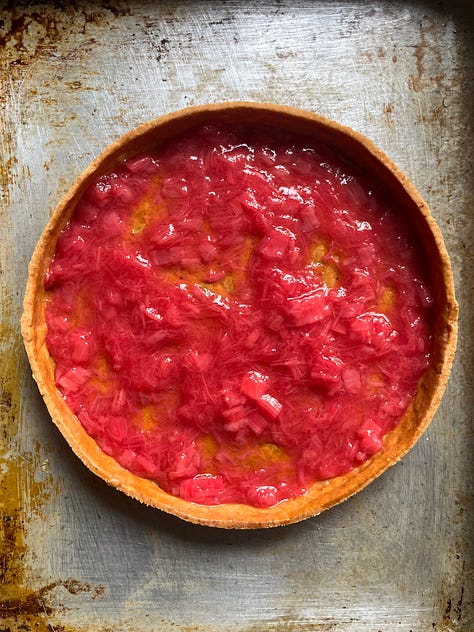
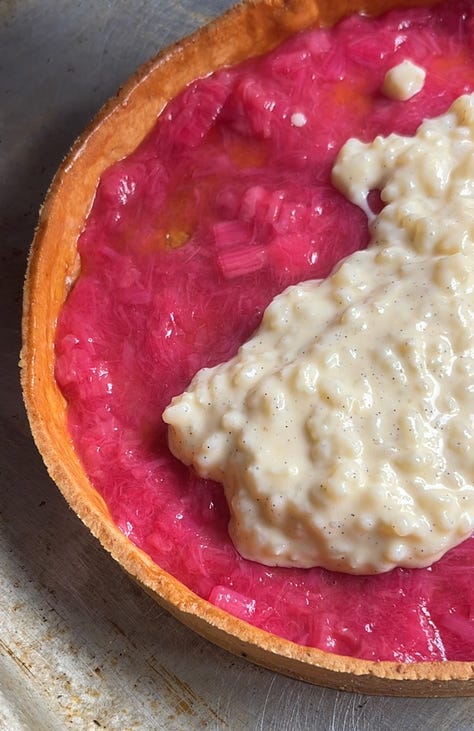
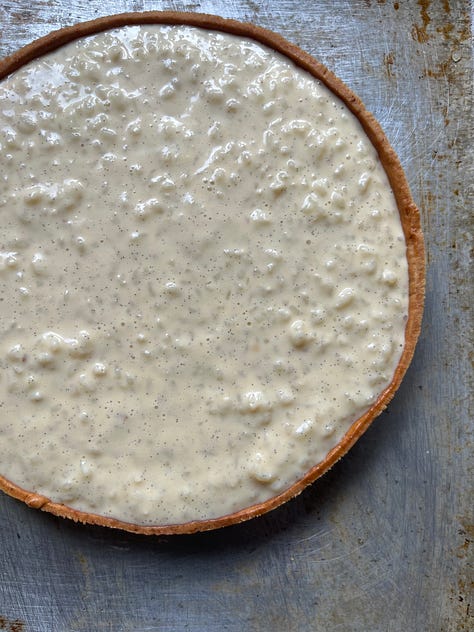
I may be in the minority, but I actually don’t love rice pudding when it’s too firm. I much prefer it tender and creamy - not runny, of course, but with a little bit of flow. Because I only have shallow tart cases, it took me a few attempts to figure out how to circumvent this whilst still getting a browned top for flavour. Anytime I baked the tart, the once-flowing rice pudding flowed no more. But then I realised - my oven has several settings, and one of those settings is a grill. Problem solved.
You have a few options with today’s recipe. After a suggestion from my friend Shebah who is currently staying with me, I have decided to supercharge my tart in one of the most satisfying ways: BRÛLÉE’d. It’s totally optional but it does add an extra level of texture and - let’s be honest - joy to the whole affair.
You can, of course, forgo the browned top completely and flip the tart around, placing the compote on top of the rice pudding - I wouldn’t recommend this for large tarts, but for mini tartlets this is a great look. For this type, make sure you do brush the pastry case with white chocolate because otherwise it will go sloppy fast!
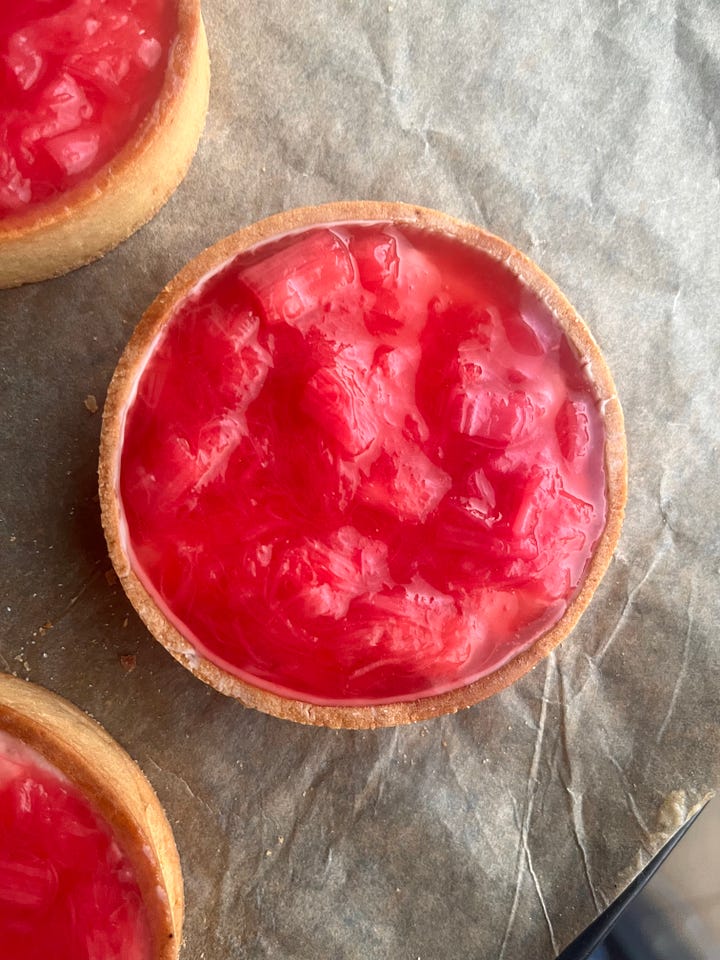
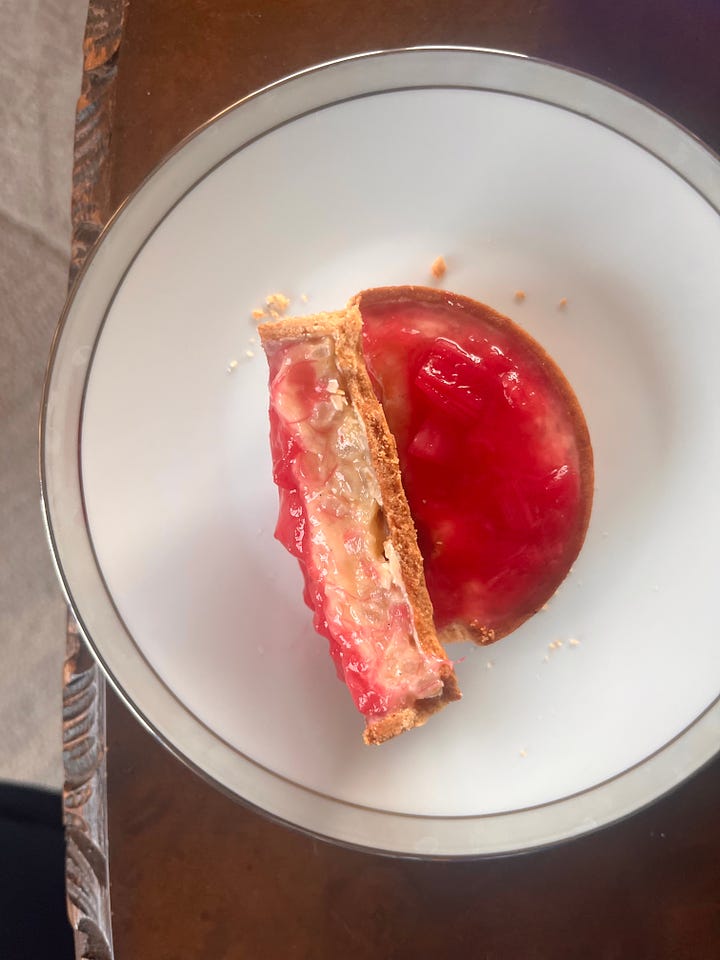
Rice pudding tart
Makes 1 x 8inch tart or 8 mini tartlets

